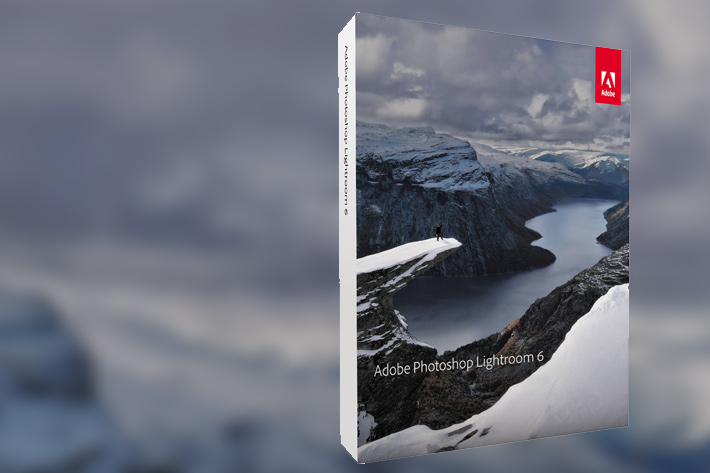
Adobe’s subscription model is not for everyone, and the recent changes of policy force many photographers to look elsewhere for alternatives to Lightroom, which perpetual license model just died.
Lightroom 6 is the last version of Lightroom with a perpetual license. There will not be a Lightroom 7 with a perpetual version, and the only thing owners of the program can expect in term of updates is a final update, Lightroom 6.13, available October 26, 2017 which will make the program compatible with the NEF format from Nikon D850, something that users have asked for quite a while. That’s the end, according to Adobe.
The end of Lightroom without a subscription goes against the promise made, May 2013, by Tom Hogarty, from Adobe and published on the company’s blog. When asked ” Will Lightroom become a subscription only offering after Lightroom 5?” Hogarty replied this: “Future versions of Lightroom will be made available via traditional perpetual licenses indefinitely.” For photographers who have not subscribed to any CC plan, this change in policy is, apparently, the end of the road, and many are already looking for alternatives, if they have not picked one up already. In fact, while a decade ago Lightroom was both a newcomer and king of the RAW editors segment, its position is far from certain now, as the market has evolved to multiple alternatives, no matter what Adobe says.
Lightroom now comes in two flavors, botth under subscription, one the Classic, which keeps everything you know from the previous CC version, and a new one, built with the web in mind – and created to solve the speed problems of the actual Lightroom – which does not offer the DAM (Digital Asset Management) options that made Lightroom so interesting for many. With the new Lightroom CC your files will be online, at Lightroom servers, always accessible. No more catalog or collections, but the need for a high-speed connection to the Internet, wherever you are, is a must if you want to use it. And you’ll have to pay for space for yout files, at $9.99/monthly per Terabyte.
Let’s leave to others the discussion of how viable – and costly – this solution is. Lightroom moving to a subscription only service, does not mean you’ve to give up photography altogether. The words Lightroom and Photoshop may still remind us a lot how the word “Kodak” meant “camera” decades ago, but in fact many people use other programs to edit their photographs. Alternatives to Photoshop always existed, and the launch of Lightroom, a decade ago, helped to open a new segment of the market, with similar solutions.
Photoshop and Lightroom also created the base for the development of plugins, software that extends their functions, and, not surprisingly, it’s from many of those plugins that have appeared the programs that are, in modern days, alternatives to both of the solutions from Adobe. They are out there, waiting for you to discover them. From Topaz Labs, which has its own completely free editor, to the sophisticated ON1 Photo RAW, which became a full-fledged program, mix of Photoshop/Lightroom and all the plugins you may need, the old plug-ins became independent and able to offer everything that is needed for a photographer’s workflow.
https://youtu.be/GlAYvjlA1bE
Many of the new programs have been mentioned here at ProVideo Coalition, and I’ve not covered all the options, because there are more solutions than the names I am most familiar with. From Corel to ACDSee, from Capture One Pro to the free RAW Therapee, or LightZone, there is a solution to fit the needs of different photographers. For those who need a DAM included or to work with their photo editor, some of the new programs offer some form of catalog. One I’ve tried briefly in 2017 is from ACDSee, and they have the new ACDSee Photo Studio Ultimate 2018, which mixes a complete DAM solution with a very capable photo editor.
Last July, in one article about 10 years of Lightroom and the available alternatives, I wrote that if you did not need or like Lightroom’s catalog there other options available. Well, now I can write that, besides the DAM alternatives available, like ACDSee’s, and the promised DAM from Affinity Photo, Macphun also announced that its Luminar RAW and photo editor, available for mac and soon for Windows, will include a DAM module in 2018, and it will be free to owners of the Luminar 2018 version, which costs $69.
One should also remember that if you do not need a catalog similar to the one present in Lightroom, ON1 Photo RAW 2018 offers a browser that is fast and, when used with the option to index folders, makes for a reliable way to use keywords, colors, stars and other functions to manage your files. So, there are other ways to build your workflow.
Adobe says that the end of Lightroom with as perpetual license is the company’s answer to a reality: “Customers are overwhelmingly choosing the Creative Cloud Photography plan as the preferred way to get access to Lightroom. We’re aligning our investment with the direction our customers have signaled over the last several years.”
Visiting many forums online, and reading the comments published, it seems that not all the customers are choosing the Creative Cloud Photography plan. If you add to those comments the fact that many of the alternative programs base their marketing on the “no subscription needed” motto, and they seem to thrive, then Adobe may be throwing away a huge part of their client base. Maybe they don’t care, as now Adobe created ways for professionals to pay to keep their images in their servers. At $9.99 per Terabyte, monthly. Added to the cost of the software… or service.
